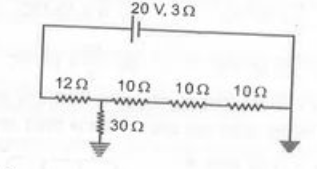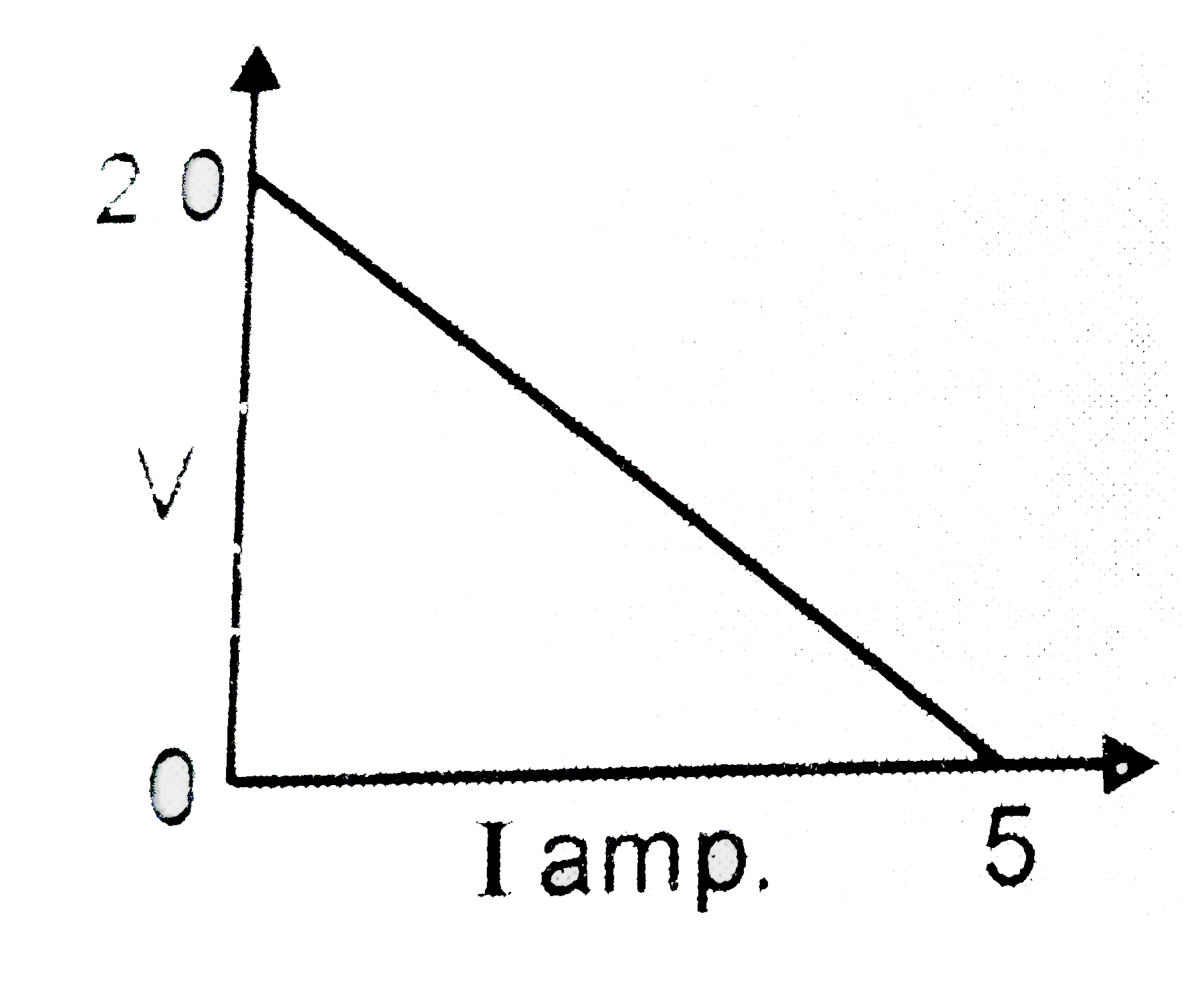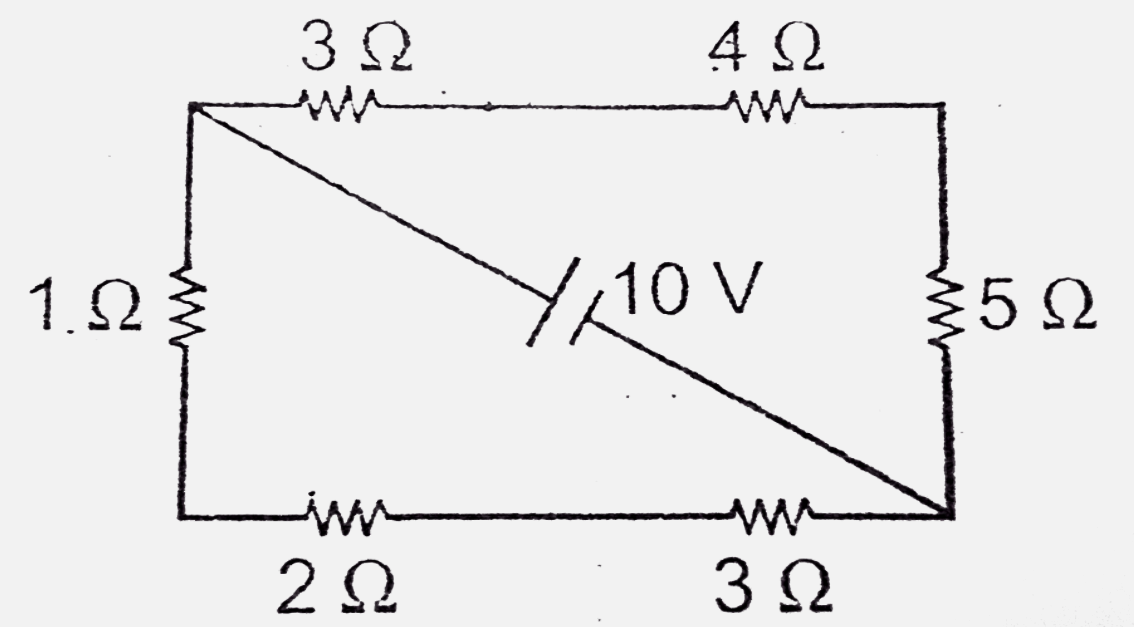The difference between the electrode potentials of two electrons when no current is drawn through the cell is called:
cell potential
cell emf
potential difference
cell voltage
The correct Answer is:B
To solve the question, we need to identify what the difference between the electrode potentials of two electrodes is called when no current is flowing through the electrochemical cell. Here's a step-by-step breakdown of the solution:
Step 1: Understand the Concept of Electrode Potential
Electrode potential refers to the ability of an electrode to gain or lose electrons when in contact with an electrolyte. Each electrode in a cell has a specific potential based on its chemical environment.
Hint: Remember that electrode potential is a measure of how easily an electrode can either gain or lose electrons.
Step 2: Define the Condition of No Current Flow
When no current is drawn from the cell, it means that the electrochemical reactions at the electrodes are at equilibrium. In this state, the potential difference between the two electrodes is stable.
Hint: Think about what happens in a battery when it is not connected to a circuit; it still has a potential difference.
Step 3: Identify the Term for the Difference in Electrode Potentials
The difference in electrode potentials when no current is flowing is specifically referred to as the electromotive force (EMF) of the cell. This is a key term in electrochemistry.
Hint: EMF is often denoted as the maximum potential difference a cell can provide under open-circuit conditions.
Step 4: Choose the Correct Answer
From the options provided:
- Cell potential
- Cell EMF
- Potential difference
- Cell voltage
The correct term for the difference in electrode potentials when no current is drawn is cell EMF.
Hint: Look for the term that specifically describes the potential difference in a non-discharging state.
Final Answer
The difference between the electrode potentials of two electrodes when no current is drawn through the cell is called cell EMF (electromotive force).
Electrode potential refers to the ability of an electrode to gain or lose electrons when in contact with an electrolyte. Each electrode in a cell has a specific potential based on its chemical environment.
When no current is drawn from the cell, it means that the electrochemical reactions at the electrodes are at equilibrium. In this state, the potential difference between the two electrodes is stable.
The difference in electrode potentials when no current is flowing is specifically referred to as the electromotive force (EMF) of the cell. This is a key term in electrochemistry.
From the options provided:
- Cell potential
- Cell EMF
- Potential difference
- Cell voltage
The difference between the electrode potentials of two electrodes when no current is drawn through the cell is called cell EMF (electromotive force).
Topper's Solved these Questions
- BOOK - NCERT FINGERTPS ENGLISHCHAPTER - ELECTROCHEMISTRYEXERCISE - ASSERTION & REASON15videos
ELECTROCHEMISTRY
- BOOK - NCERT FINGERTPS ENGLISHCHAPTER - ELECTROCHEMISTRYEXERCISE - Electrochemical Cell1videos
ELECTROCHEMISTRY
- BOOK - NCERT FINGERTPS ENGLISHCHAPTER - ELECTROCHEMISTRYEXERCISE - HOTS10videos
ELECTROCHEMISTRY
- BOOK - NCERT FINGERTPS ENGLISHCHAPTER - COORDINATION COMPOUNDS EXERCISE - Assertion And Reason15videos
COORDINATION COMPOUNDS
- BOOK - NCERT FINGERTPS ENGLISHCHAPTER - GENERAL PRINCIPLES AND PROCESSES OF ISOLATION OF ELEMENTSEXERCISE - Assertion And Reason15videos
GENERAL PRINCIPLES AND PROCESSES OF ISOLATION OF ELEMENTS
Similar Questions
Knowledge Check
- Question 1 - Select One
Assertion :EMF of the cell is the potential difference between the electrode potentials of the cathode and anode when no current is drawn through the cell.
Reason: Anode is kept on the right side and cathode on the left side while representing the galvanic cell.AIf both assertion and reason are true and reason is the correct explanation of assertion .BIf both assertion and reason are true but reason is not the correct explanation of assertion .CIf assertion is true but reason is false .DIf both assertion and reason are false . - Question 2 - Select One
The electrode potential of oxidation half cell
Aa. is independent of the concentration of ions in the cellBb. decrease with deccreased concentration of ions is the cellCc. decreases with increased concentration of ions in the cellDd. none of these. - Question 3 - Select One
Which cell will measure standard electrode potential of copper electrode?
APt(s)|H2(g,0.1bar)|H+(aq,1M)∣∣∣Cu2+(aq,1M)∣∣CuBPt(s)|H2(g,1bar)|H+(aq,1M)∣∣∣Cu2+(aq,2M)∣∣CuCPt(s)|H2(g,1bar)|H+(aq,1M)∣∣∣Cu2+(aq,1M)∣∣CuDPt(s)|H2(g,1bar)|H+(aq,0.1M)∣∣∣Cu2+(aq,1M)∣∣Cu
The electric current drawn from cell is
 View Solution
View SolutionWrite points of difference between
(i) electrode potential and electromotive force
(ii) primary cells and secondary cells
(iii) electrolytic cell and electrochemical cells.View SolutionFor a cell, the graph between the potential difference (V) across the terminals of the cells and the current I drawn from the cell is as shown in figure. Calculate the e.m.f. and the internal resistance of the cell.
 View Solution
View SolutionWhen a potential difference is applied across, the current passing through
View SolutionIf V is the potential difference between the ends of conductor and l is the current through it, then ohm's law states that
View Solution


